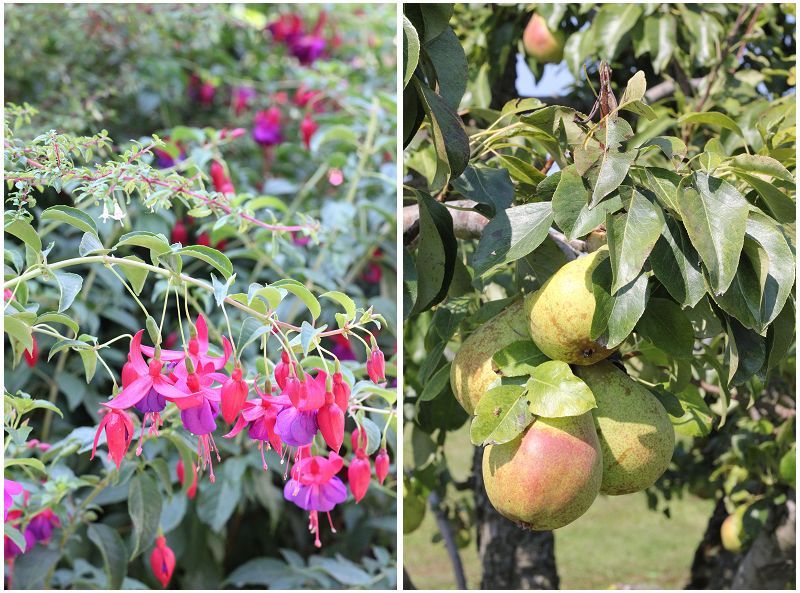Sending this to Yeastspotting.
Click here for my blog index.
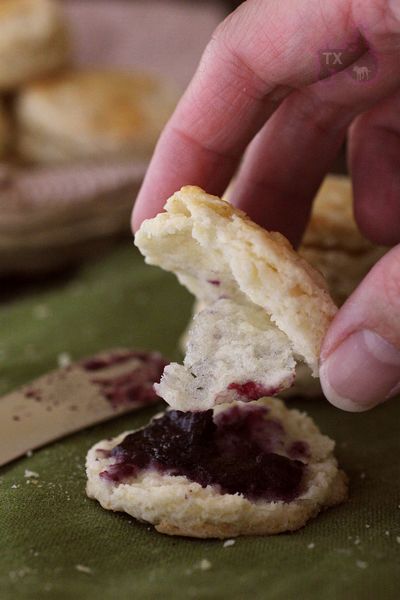
Floyd and Breadsong have both written about their experience with Kneading Conference West. It was indeed a fun, delicious, and enduational experience. In addition to learning specific techniques, I was very impressed with fellow attendees' dedication and appreciation to local organic whole grains. Love for the land and nature reflects clearly in their baking, and our taste buds were greatly rewarded as the result. One of the highlights of the conference for me is to meet fellow TFLers, it's always fun to put faces to names!
This biscuit recipe was from one of the workshops I attended.
AP, 339g
sugar, 28g
baking powder, 21g
salt, 5g
butter, 112g, cut into 1/4inch cubes
egg, 27g
buttermilk, 186g
baking at 400F for 15min
The recipe itself is nothing special, it's the techique that I found helpful. Butter was cut into small chunks and lightly mixed with flour (not smeared in like pie dough), liquid is poured in, and the very rough dough was folded 2-3 times like an envelope, which creates minimal amount of gluten necessary to keep the biscuits together, yet keep the end product light and loose. The folding also creates nice layers in biscuits, similar to laminated doughs.
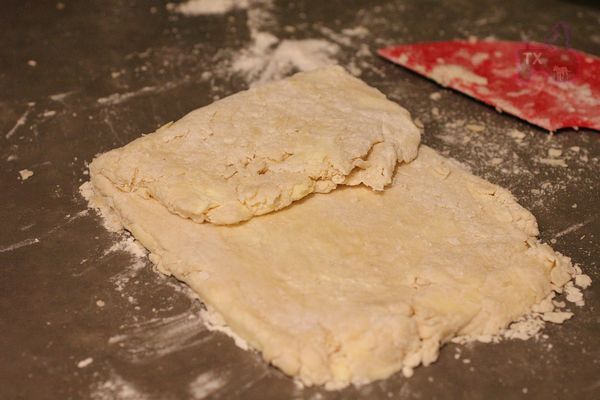
The instructor demonstrated a whole wheat version at the workshop and I made the formula with AP flour at home, both were incredibly flaky.

I have been wanting to learn how to make a good pie crust for a long time now. I have read enought tips, but it really takes looking and touching the "right dough" to finally "get it". At the pie workshop, I finally got to see what's the right consistency for a pie dough, what is "as dry as possible but not too dry", and how to rub butter chunks into flour without creating too much glutent developement. The instructors showed us pie crusts made with different flours and fats. At home, I tested out the all butter recipe with AP flour -- success! When the dough is of the right consistency, everything became so easy . No more tear and shrinking!
AP, 709g
sugar, 38g
salt, 1.5tsp
butter, 450g, cut into 1inch chunks
ice water, 240g (more or less)
lemon juice, 2TBSP
1. Mix AP, sugar, salt, rub/smear cold butter chunks into cold dry ingredients until butter becomes quarter sized pieces
2. Add lemon juice and 1/2 of ice water, mix roughly, pour onto counter, press dough together. If dough is too dry/crumbly, add the rest of ice water as needed.
3. Pat into one disk, cut into 4, pat each one into disk, rest in fridge before rolling out. The dough can be wrapped and frozen as well.
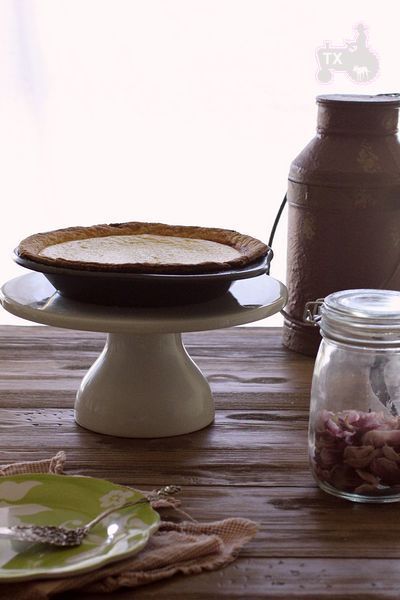
This is an Italian rice ricotta pie, typical for Easter, but good for anytime. Fillig recipe here: http://www.npr.org/templates/story/story.php?storyId=88470828 , pie crust recipe was from the conference, and I did reduce the amount and only made a 9inch pie.

Can't wait to try the WW pie crust, or one with lard. I see a lot of pie eating in my future.
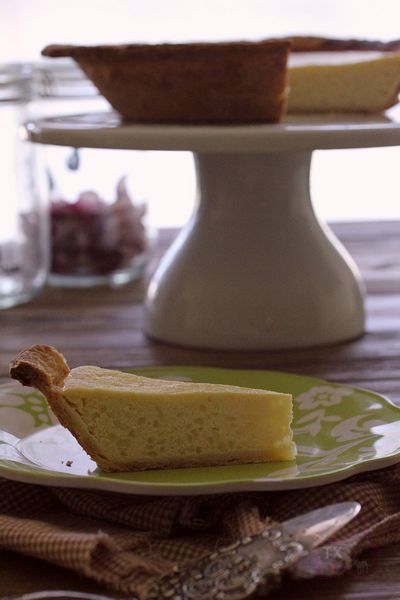
On the last day I attended a cracker workshop. I never knew crackers were such great vehicle for whole grain flours. There's no worries about rising and fermentation, so one really can experiement with different kinds of flours and grains/seeds. Tasting some samples, I was floored how delicious the fresh organic flours taste. The recipes for these crackers are not complicated, which means flavors of ingredients really shine through. The following crackers were made from a oat cake formula from that workshop. Since my flours were not as fresh as what's used at the workshop, the flavors were not as great, so I immediately ordered myself some fresh whole grain flours.
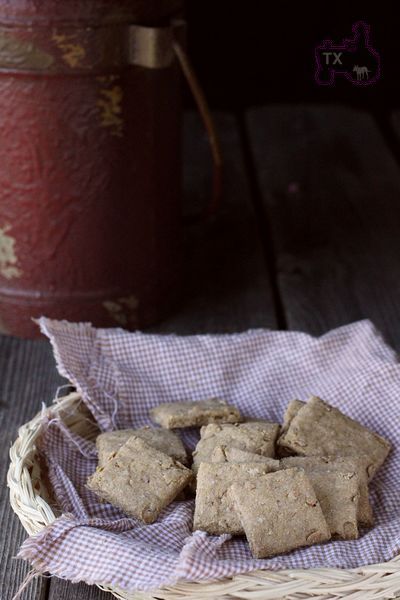
Oat flake/spelt flake, 100g
Corn meal, 100g
WW flour, 200g
salt, 5g
butter, 136g, softened
sugar, 20g
code water, 80g
baking powder, 2g
baking soda, 2g
1. Mix everything, knead, pat into disk, rest in fridge for an hour.
2. Roll out to 1/4-1/2 thickness, cut into shape
3. Bake at 350F for about 10min
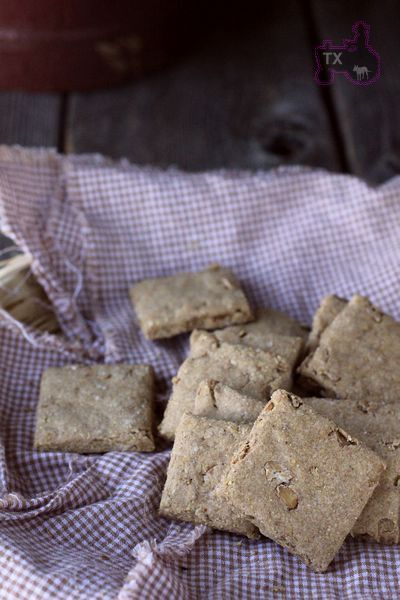
Here are some photos from the conference
Andrew Whitley, author of "Bread Matters", a book I have owned and loved for years.
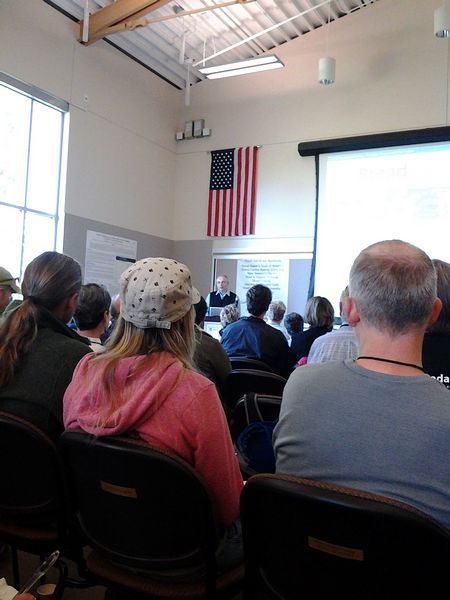
My first encounter with Brick Oven, it's not easist equipment to use, but OMG, pizzas sure come out great from it!
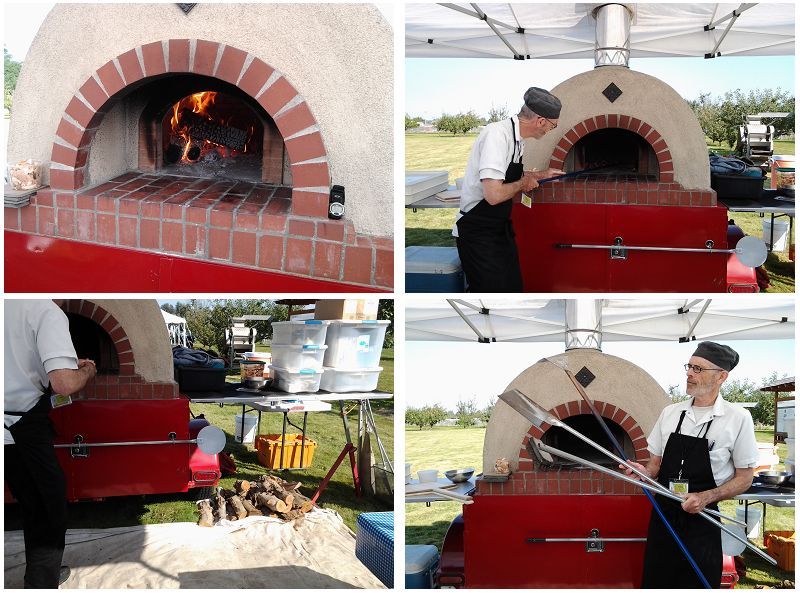
Trying my hand on pizza stretching. Thought about tossing it around like a pro, but "wisely" decided against it.
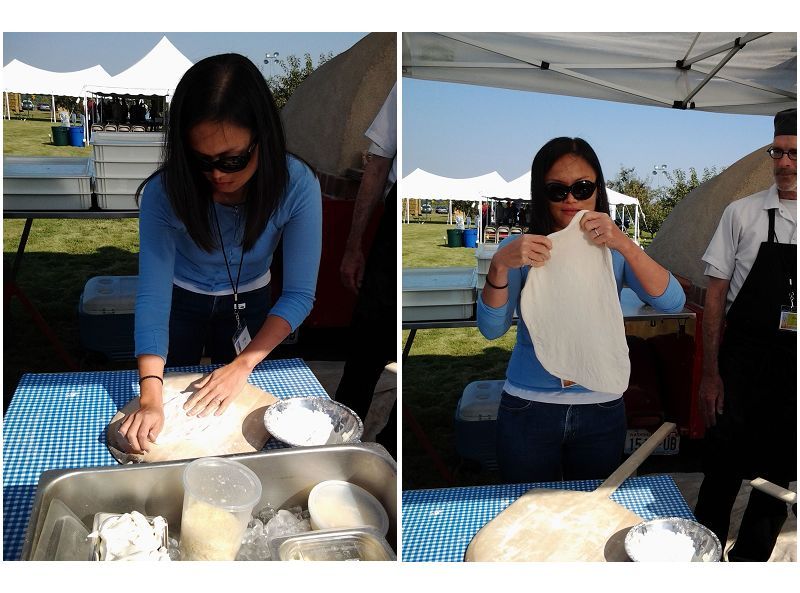
We ran out of topping, so the rest of dough became pita breads!
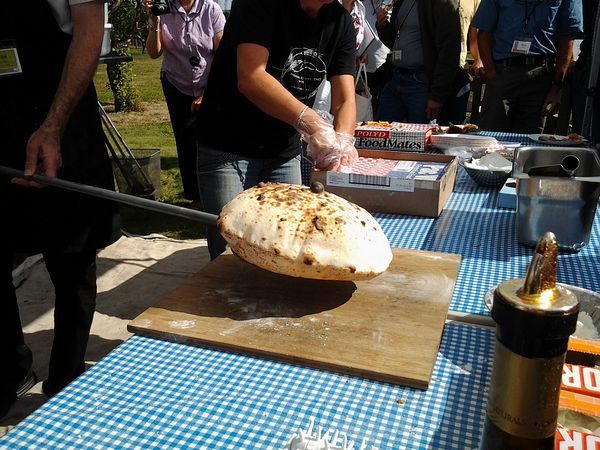
Then I went to the cracker class, these crackers are the oak cakes I posted above, but these tasted so much better, becase the ingredients were better/fresher I suspect.
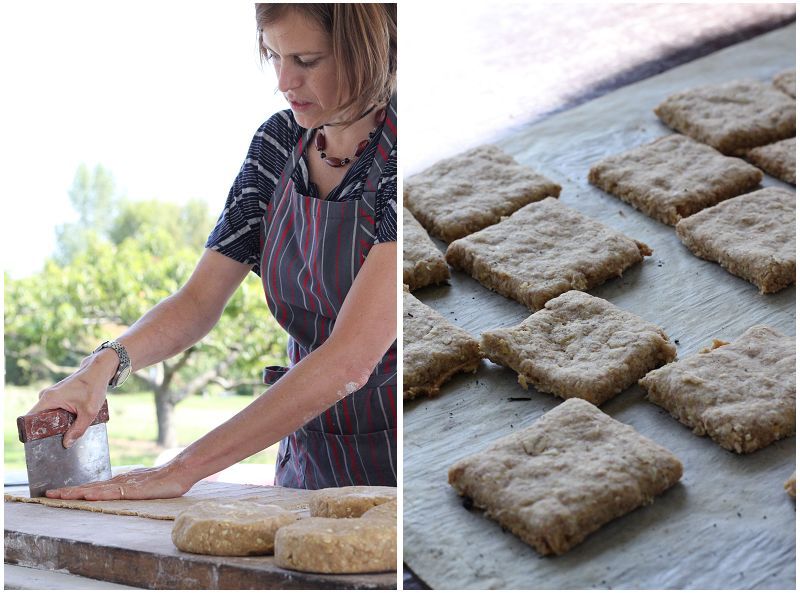
Hazelnut shortbread cookies. The thing about these crackers is that flavor of the ingredients really shine through. I immediately bought some local hazelnuts after tasting these cookies.
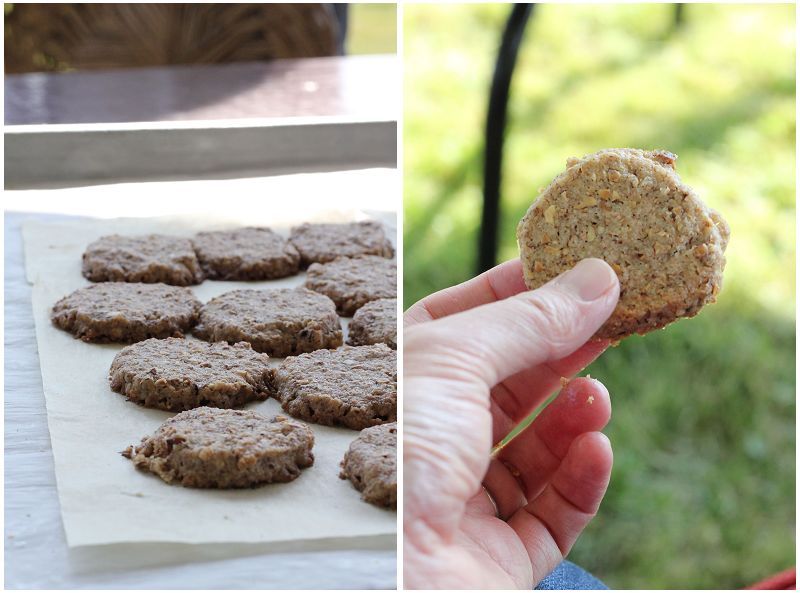
Some red wine spelt thin crackers. Oh, did I mention all the crackers were made in a brick oven?
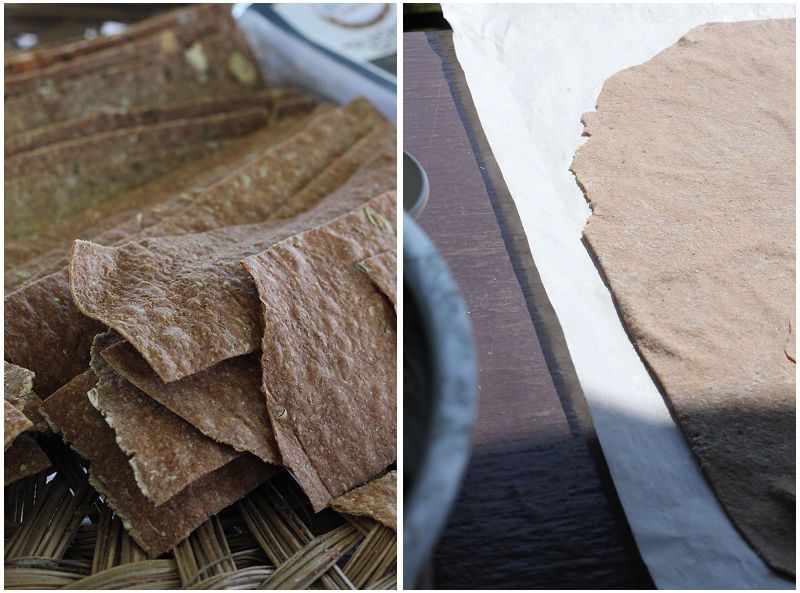
Went to a sweet bread class on the last day. Made some pretzels. The one on the left were made with white flour, and tasted more traditional; the one on the right were made with ww flour and a bit of starter, tasted great but not traditional. I like both. Oh yeah, I shaped these two!
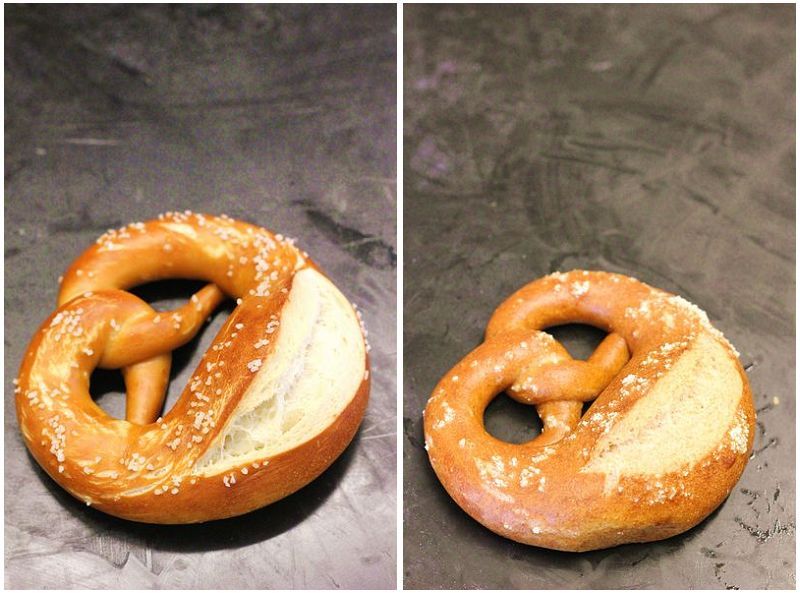
My first encounter with Mexican Conchas. A bit similar to Chinese Pineapple Buns but ... different.
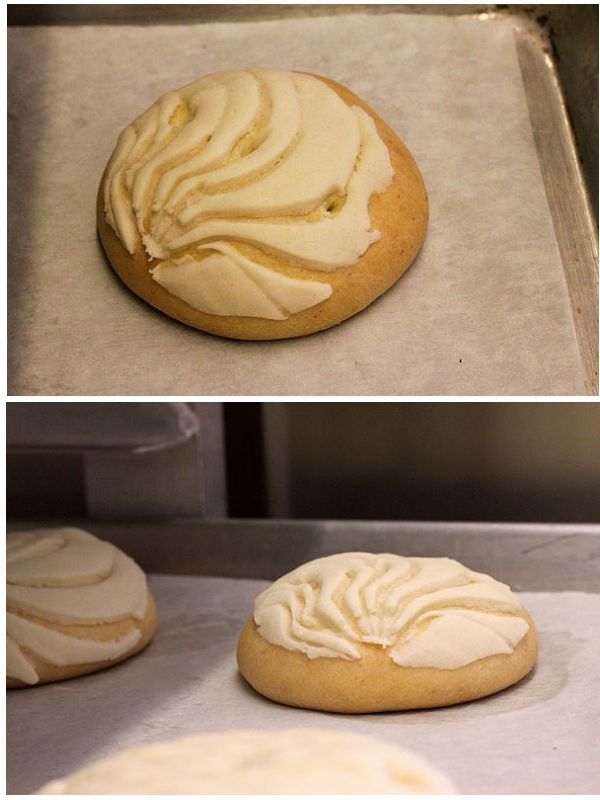
And now I want to buy some Conchas presses.

These were the ww version of the biscuit formula I posted above. In comparison, I like ww ones better.

To make the conference even more perfect, we had great wether for all 3 days, and the setting was beatiful with fruit trees and herb gardens.
